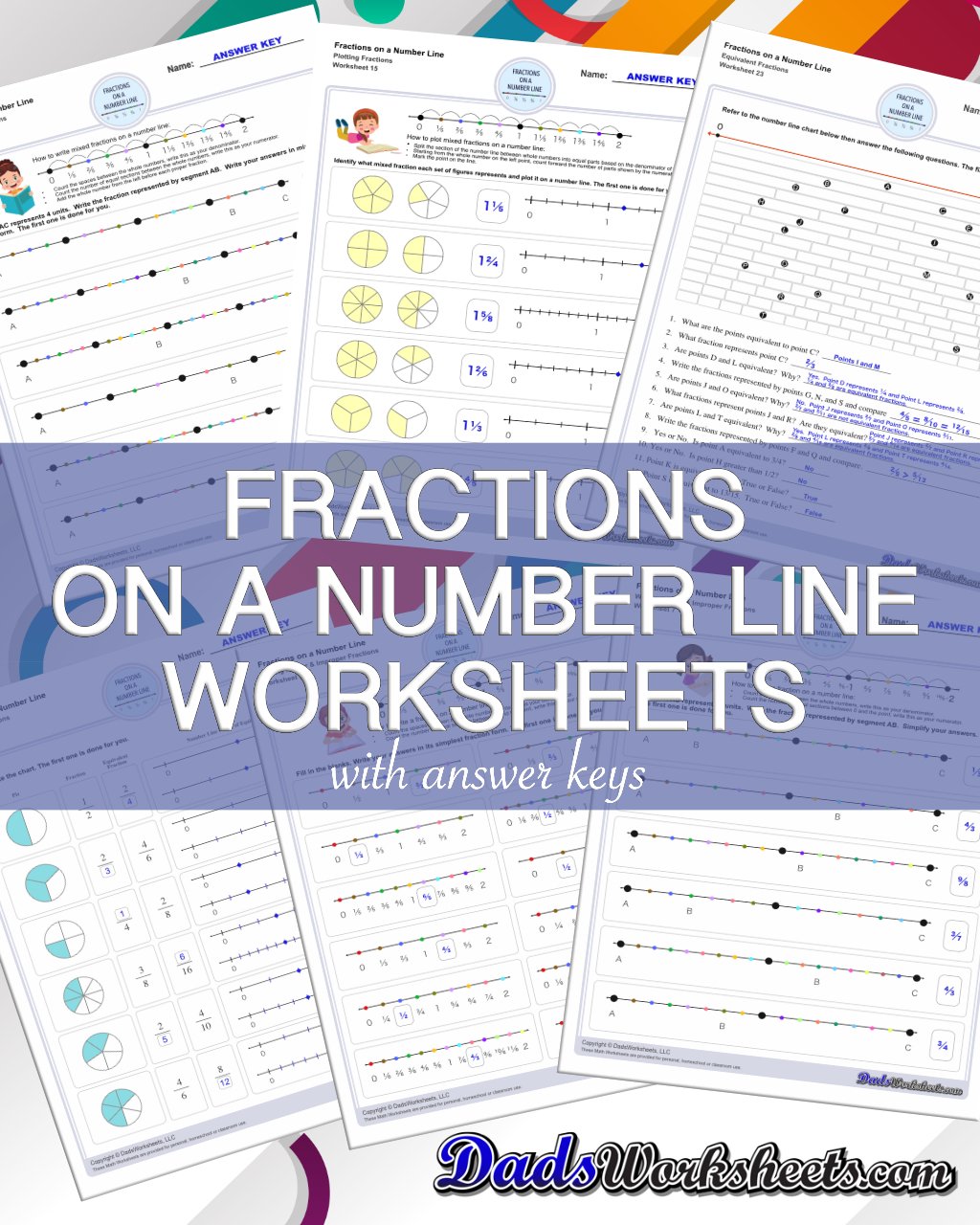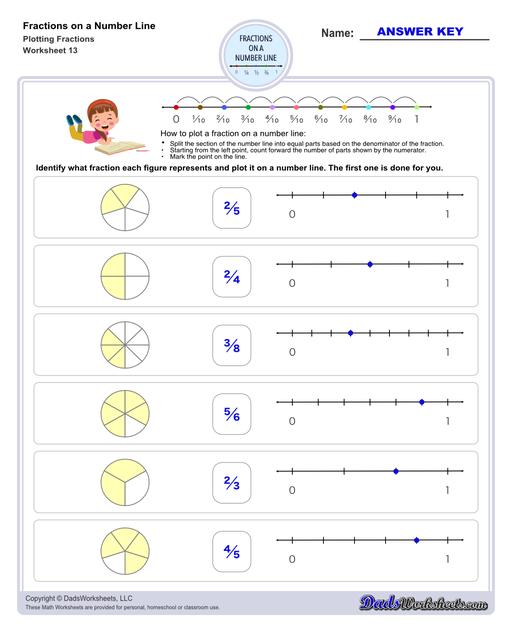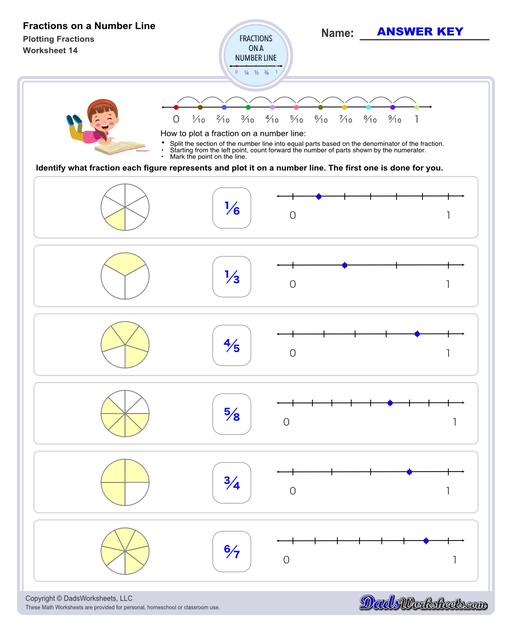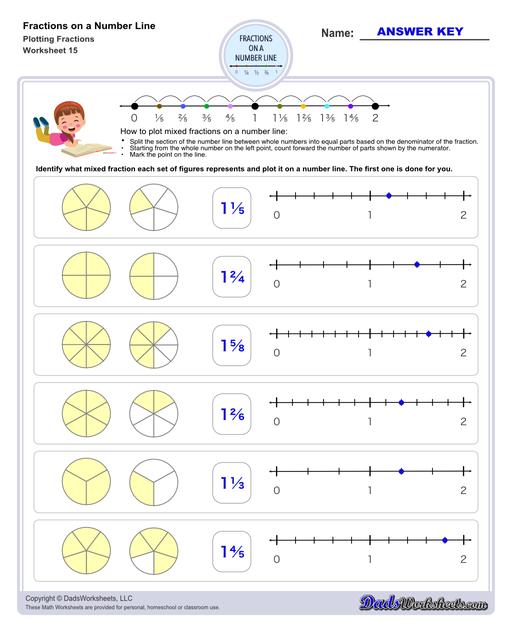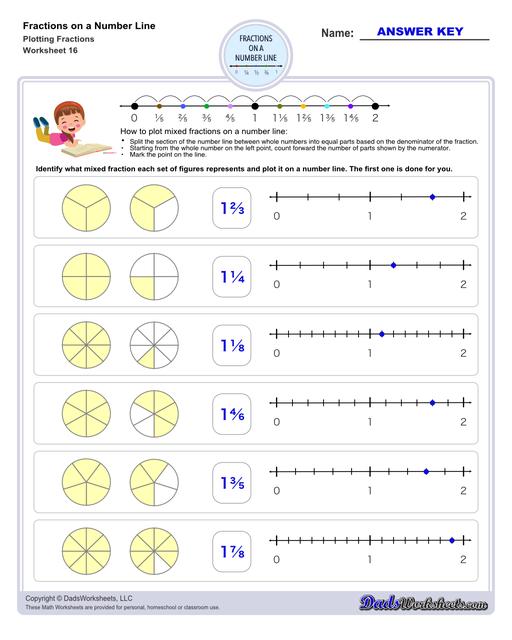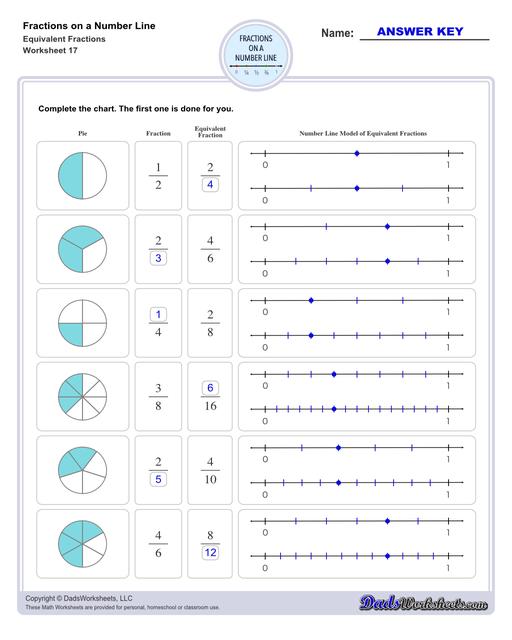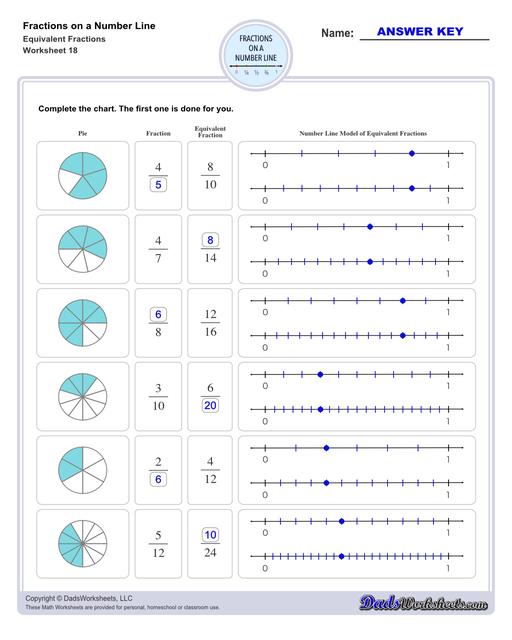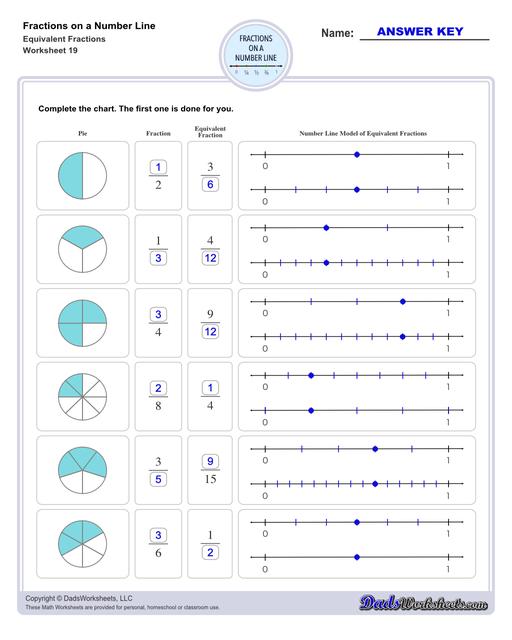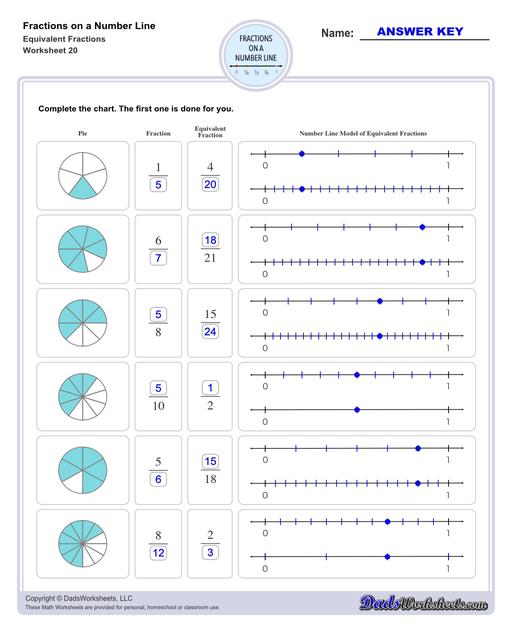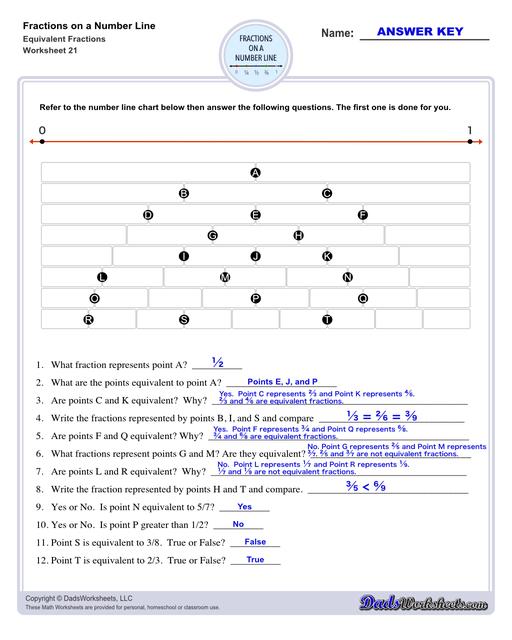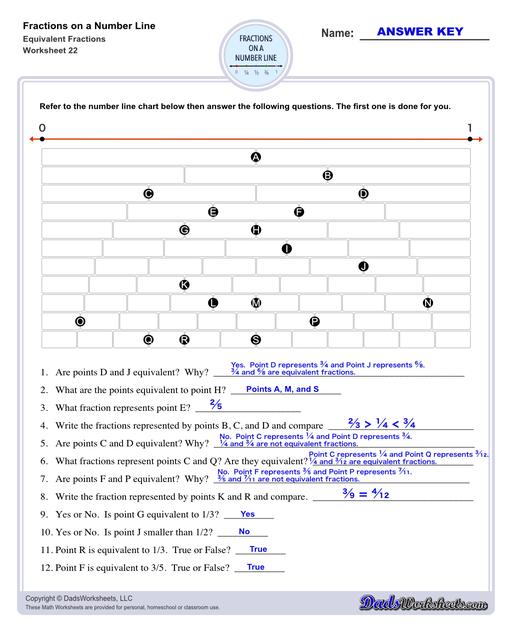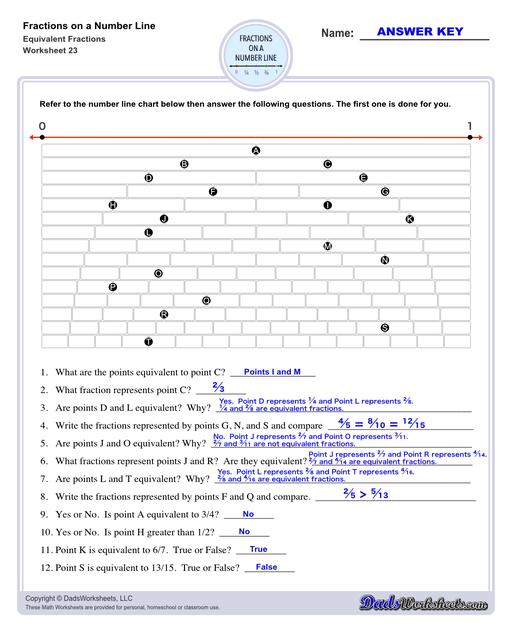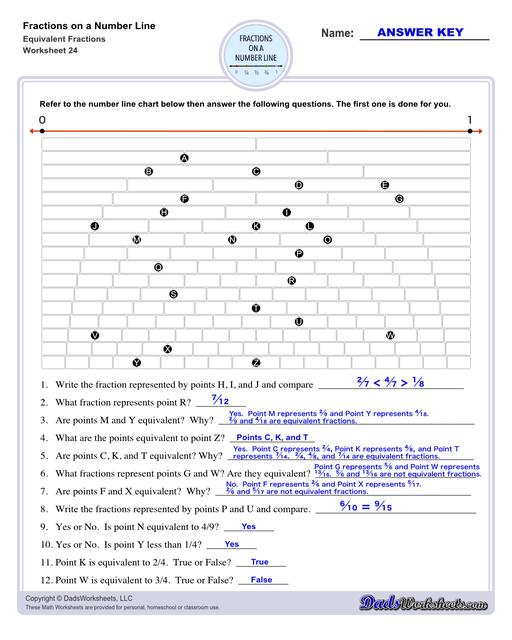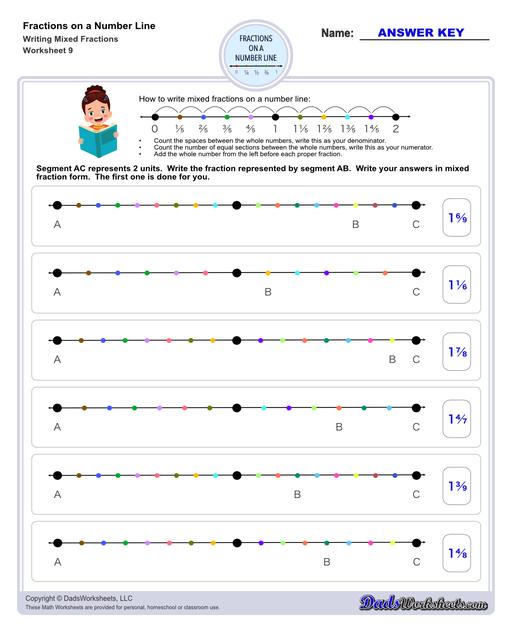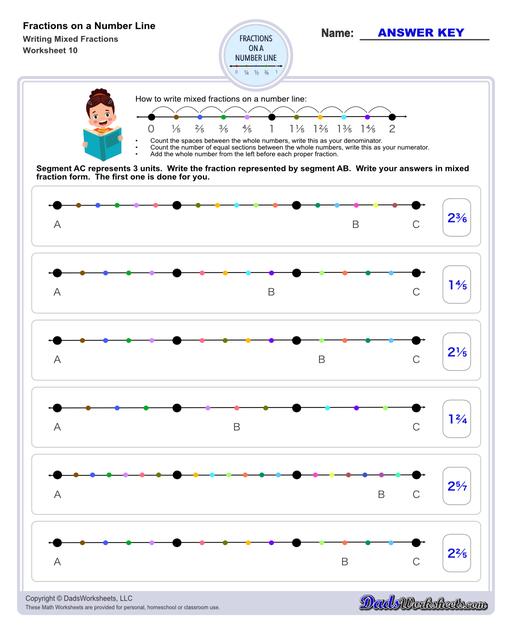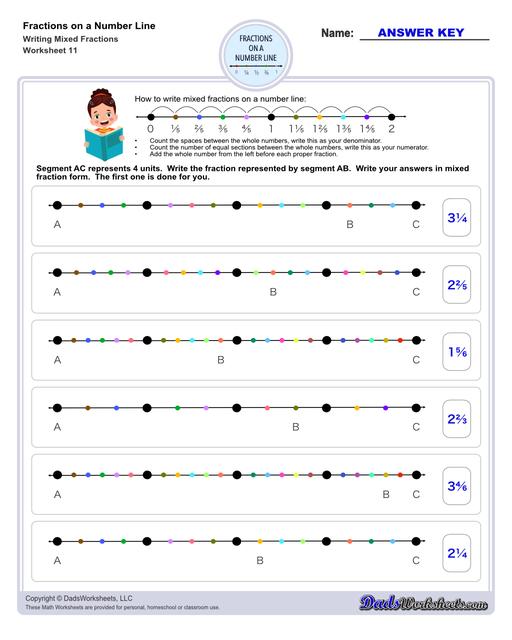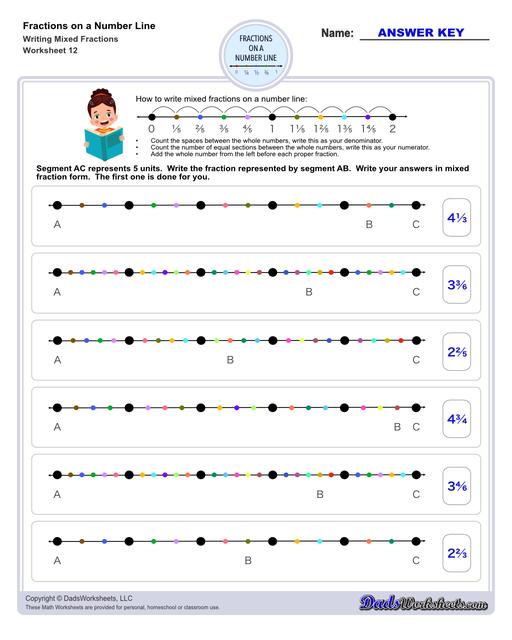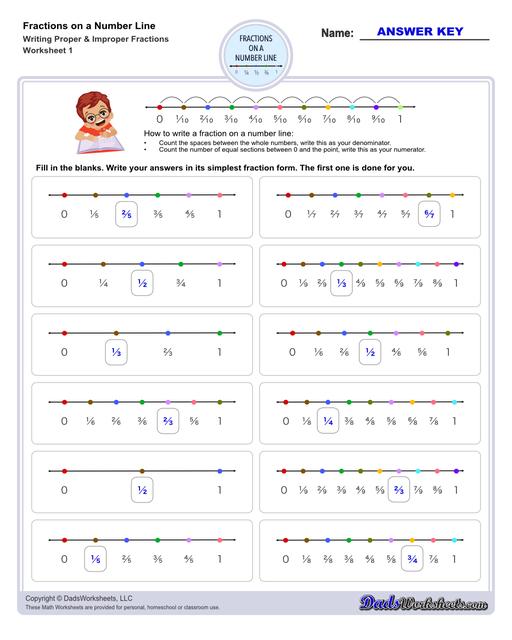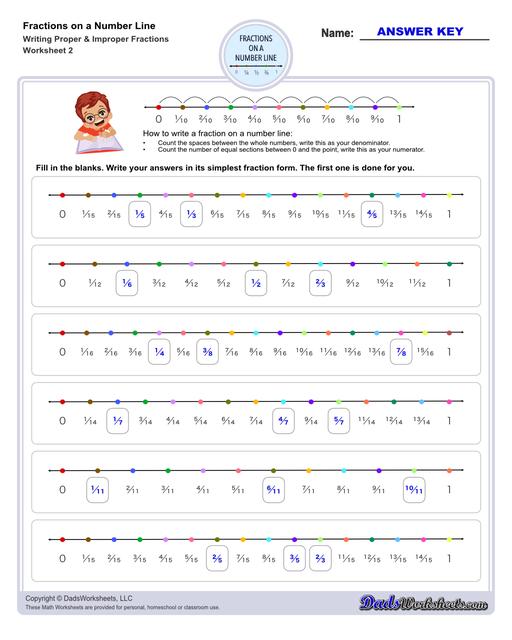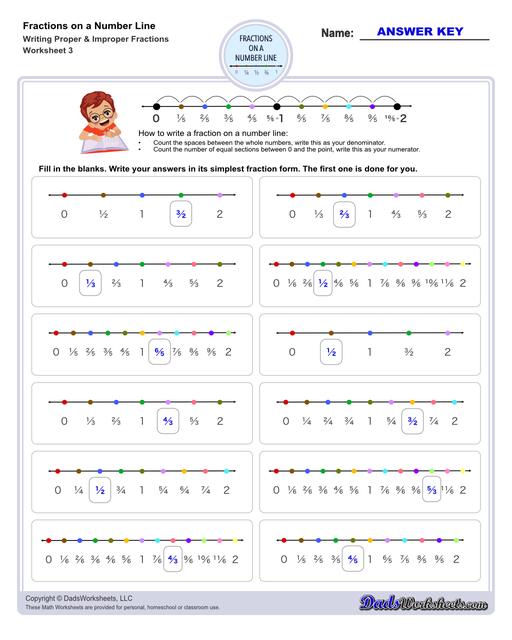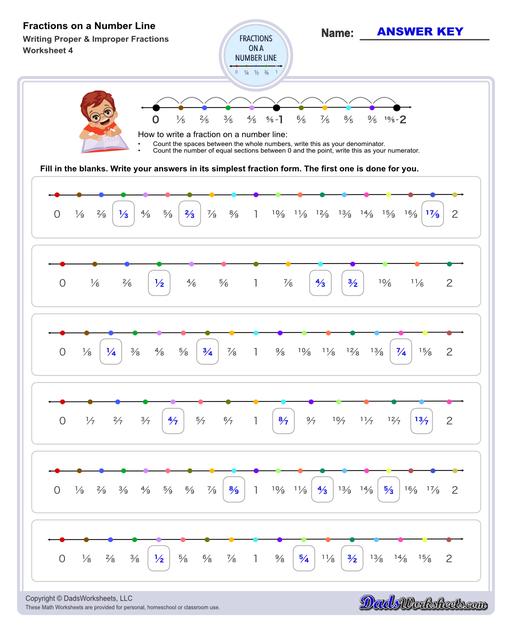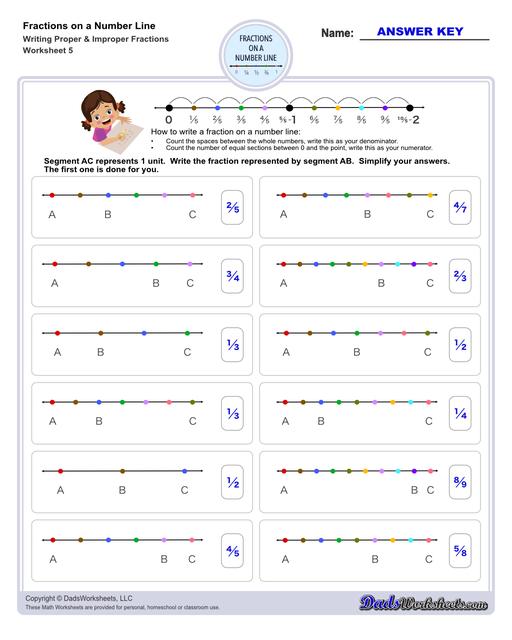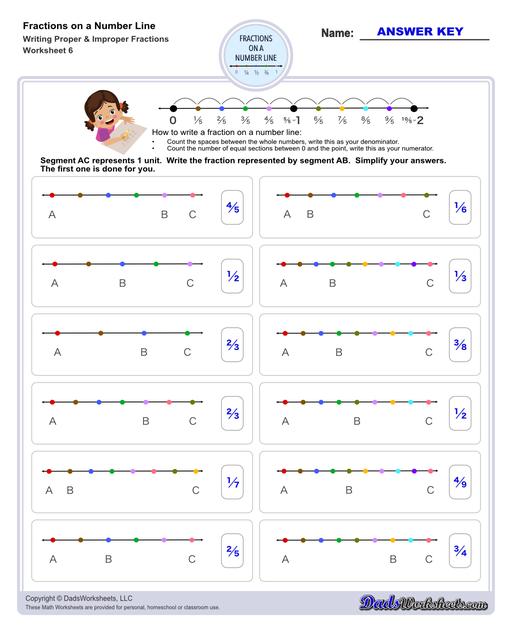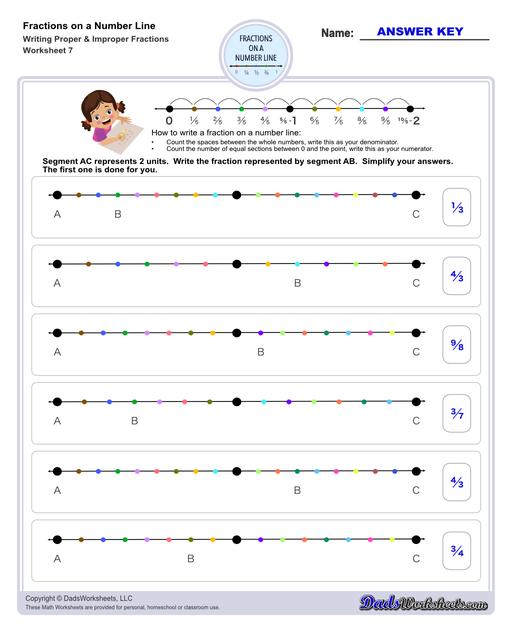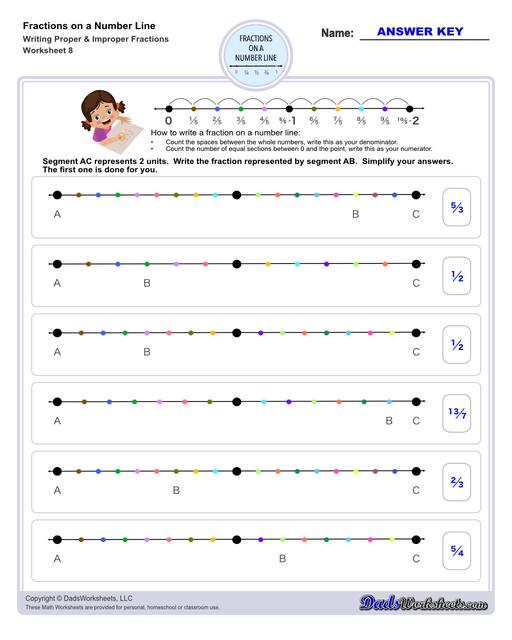Core Math Worksheets
Fraction Worksheets
Algebra
Other Worksheets
Place Value
Percentages
Rounding Numbers
Ordering Numbers
Standard, Expanded, Word Form
Mean Median Mode Range
Ratio Worksheets
Probability Worksheets
Roman Numerals
Factorization, GCD, LCM
Prime and Composite Numbers
Pre-Algebra
Geometry Worksheets
Blank Clocks
Telling Analog Time
Analog Elapsed Time
Greater Than and Less Than
Money
Arithmetic Sequences
Geometric Sequences
Venn Diagram
Graph Worksheets
Measurement & Conversions
Patterns and Puzzles
Color by Number
Holiday & Seasonal
Early Learning
Printables
Calculators
Math Worksheets by Grade
Worksheet News
Fractions on a Number Line
This web page offers a collection of printable worksheets dedicated to fractions on a number line. These worksheets aim to enhance students' understanding of fractions by placing them on a number line. The worksheets include exercises dealing with both simple fractions and mixed numbers and improper fractions. With clear instructions and visually engaging designs, these printable worksheets provide a hands-on learning experience that helps students grasp the concept of fractions in relation to themselves as well as whole numbers.
Fractions on a Number Line
Equivalent Fractions on a Number Line
Mixed Fractions on a Number Line
Improper Fractions on a Number Line
What is a Fraction Number Line?
A Fraction Number Line, as the name suggests, represents fractions on a number line. It is a number line that presents two numbers at both ends of the line. All the fractions that can be found between the two whole numbers are on the line between these two numbers.
Number Line and Fractions
A number line is defined as a straight line with numbers located at equal segments along its length. A number line can be extended infinitely and is usually represented horizontally.
Fractions represent the parts of a whole or collection. A fraction has two parts: numerator and denominator. The numerator represents the number of equal parts taken and is written at the top. The denominator represents the total number of equal parts in a whole and is written at the bottom.
Presenting fractions on a number line helps students understand the values of fractions and how they can be added together to form a whole number. But how exactly do we do it? For some, fractions can be difficult to understand so I made this step-by-step guide followed by examples with illustrations to help break down how fractions work and how to make writing and plotting fractions on a number line extremely easy.
How To Write Fractions on A Number Line
Guide 1: How to write a proper fraction on a number line
A proper fraction is a fraction whose denominator is greater than the numerator.
- Count the spaces between the whole numbers, write this as your denominator.
- Count the number of equal sections between 0 and the point, write this as your numerator.
Example 1: Write and plot the fractions on the number line below.

First, count the spaces between the whole numbers 0 and 1, write this as your denominator. There are 10 equal parts, so your denominator is 10.

Next step, count the number of equal sections between 0 to each point, write this as your numerator. From 0 (red) to the next point (brown), I counted 1, so for this point the numerator is 1. Do the same with other points.

Guide 2: How to write an improper fraction on a number line
An improper fraction is a fraction whose denominator is less than the numerator.
- Count the spaces between the whole numbers, and write this as your denominator.
- Count the number of equal sections between 0 and the point, write this as your numerator.
Example 2: Write and plot the fractions on the number line below.

Count the spaces between the whole numbers 0 and 1 and between 1 and 2. Write this as your denominator for all the points on the number line. Remember to count between two whole numbers (not the entire line). There are 5 equal parts between 0 to 1 and 5 equal parts as well from 1 to 2, so your denominator is 5.

Count the number of equal sections between 0 to each point until your reach 2. Write this as your numerator.

Guide 3: How to write mixed fractions on a number line
A mixed fraction is a whole number and a proper fraction represented together. Note that mixed fractions or mixed numbers are always greater than 1 since its numerator is greater than the denominator when converted to a regular fraction.
- Count the spaces between the whole numbers, write this as your denominator.
- Count the number of equal sections between the whole number to each point, write this as your numerator.
- Add the whole number from the left before each proper fraction.
Example 3: Write and plot the fractions on the number line below. (with mixed fractions or mixed numbers)

First, let’s count the spaces between the whole numbers 0 to 1 and 1 to 2, and write this as your denominator (same procedure with improper fractions).

Second, count the number of equal sections between the whole number 0 to each point until you reach 1. Do the same procedure from whole numbers 1 to 2. Write this as your numerator. Remember to restart counting after you reach a whole number.

And lastly, add the whole number from the left before each proper fraction. In this example, add 1 to each proper fraction after point 1.

On those guides above, note that the fractions that lie on the right side are always greater than the fractions that are on their left side. For ordering the fractions on a number line, the fraction written on the leftmost side is the smallest and the fraction written on the rightmost side is the largest fraction, and all the other fractions between these two fractions can be compared based on their positions.
How To Plot Fractions on A Number Line
Guide 4: How to plot a proper fraction on a number line
- Draw a number line of a suitable length.
- Split the section of the number line into equal parts based on the denominator of the fraction.
- Starting from the left point, count forward the number of parts shown by the numerator.
- Mark the point on the line.
Example 4: Plot ¾ on a number line.
Let’s start by drawing a straight horizontal line. Then mark both ends with 0 and 1.

Starting from 0, look at the denominator of the fraction that you need to plot. The denominator is 4. Split the section of the number line between 0 and 1 into 4 equal parts. Each part represents ¼.

Now, look at the numerator. The numerator is 3. So, start at 0 and count forward 3 parts. Mark the point on the line. This is ¾.

Note: When splitting up the whole, draw 1 fewer line than the number shown in the denominator. In this example, we drew 3 lines to make 4 equal parts.
Guide 5: How to plot an improper fraction on a number line
- Draw a number line of a suitable length.
- Split the section of the number line into equal parts based on the denominator of the fraction.
- Starting from the left point, count forward the number of parts shown by the numerator.
- Mark the point on the line.
Example 5: Plot 5/4 on a number line.
Let’s start by drawing a straight horizontal line. Convert the improper fraction into a mixed fraction. The mixed fraction is 1¼. Since 1¼ is past 1 on the number line, the whole number part is 2.

Next, look at the denominator of the fraction that you need to plot. The denominator is 4. Split the section of the number line between 0 and 1 and 1 to 2 into 4 equal parts. Each part represents ¼.

Now, look at the numerator. The numerator is 5. So, start at 0 and count forward 5 parts. Mark the point on the line. This is 5/4.

Guide 6: How to plot mixed fractions on a number line
- Draw a number line of a suitable length.
- Split the section of the number line between whole numbers into equal parts based on the denominator of the fraction.
- Starting from the left point, count forward the number of parts shown by the numerator.
- Mark the point on the line.
Example 6: Plot 1⅓ on a number line.
Draw a straight horizontal line. Then mark both ends with 0 and 2 since 1⅓ is past 1 on the number line so the whole number part is 2.

Starting from 0, look at the denominator of the fraction that you need to plot. The denominator is 3. Split the section of the number line between 0 and 1 and 1 to 2 into 3 equal parts. Each part represents ⅓.

Next, starting from the whole number 1 on the left point, count forward the number of parts shown by the numerator. Mark the point on the line. That point is 1⅓.

Equivalent Fractions
Equivalent fractions are fractions that have different numerators and denominators but are equal to the same value, and number lines can be particularly useful as a visual guide when demonstrating them. Students can see the correlation between the fractions. For example, 3/6 and 4/8 are equivalent fractions, because they both are equal to ½.
You may print one of our fraction charts to give you an easy way to see how fractions are equivalent to one another. You can use it to locate the position of two fractions to determine if they are greater than, less than, or equal to each other.
If you need blank number lines for creating your worksheets, the number line PDFs on this page include various ranges (10, 12, 15, 20, 15, and 100) in both starting from zero as well as negative ranges. A complete set of fraction number lines marked with common denominators is included in -5 to 5 ranges.
